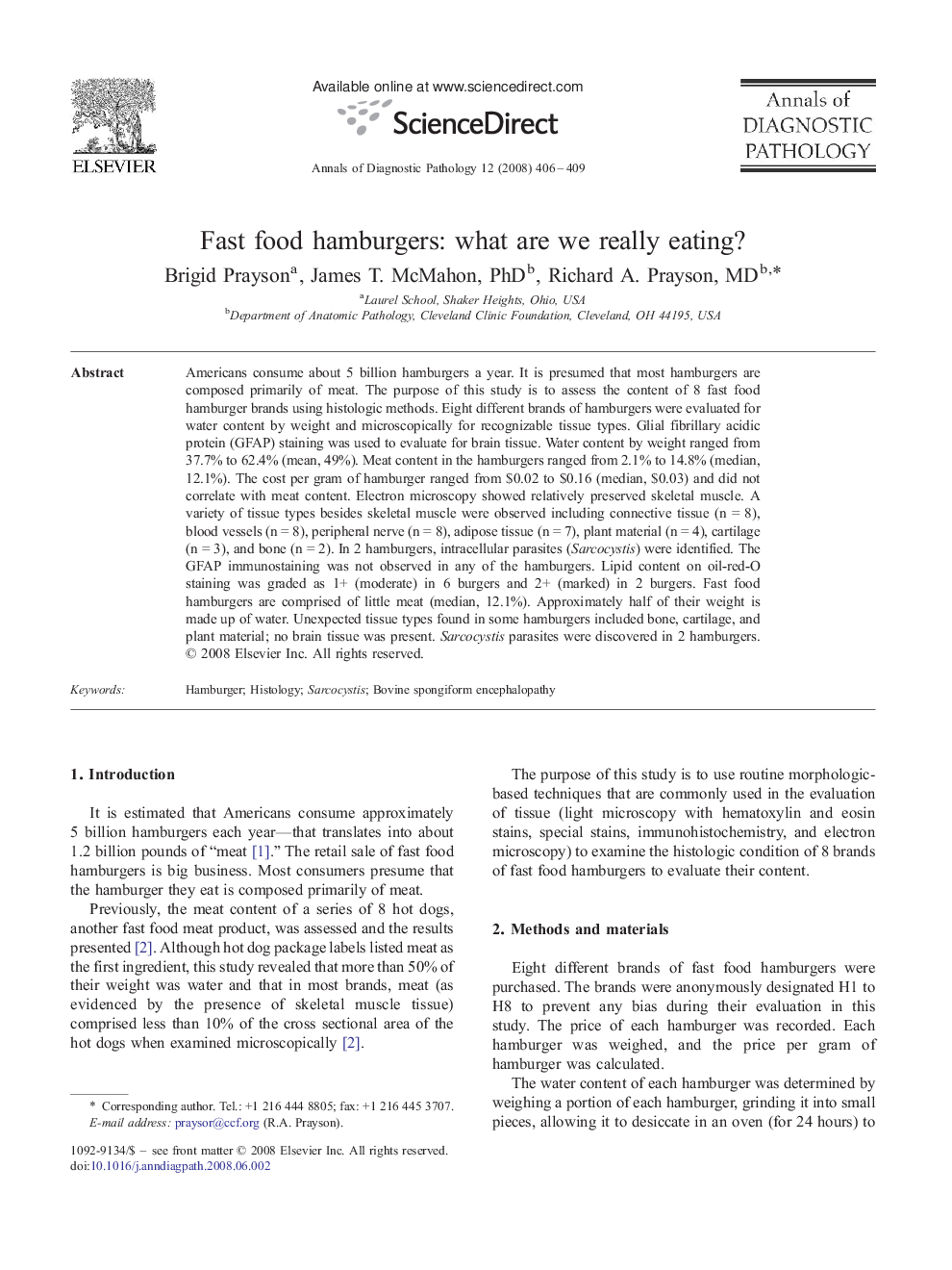| Article ID | Journal | Published Year | Pages | File Type |
|---|---|---|---|---|
| 4130494 | Annals of Diagnostic Pathology | 2008 | 4 Pages |
Americans consume about 5 billion hamburgers a year. It is presumed that most hamburgers are composed primarily of meat. The purpose of this study is to assess the content of 8 fast food hamburger brands using histologic methods. Eight different brands of hamburgers were evaluated for water content by weight and microscopically for recognizable tissue types. Glial fibrillary acidic protein (GFAP) staining was used to evaluate for brain tissue. Water content by weight ranged from 37.7% to 62.4% (mean, 49%). Meat content in the hamburgers ranged from 2.1% to 14.8% (median, 12.1%). The cost per gram of hamburger ranged from $0.02 to $0.16 (median, $0.03) and did not correlate with meat content. Electron microscopy showed relatively preserved skeletal muscle. A variety of tissue types besides skeletal muscle were observed including connective tissue (n = 8), blood vessels (n = 8), peripheral nerve (n = 8), adipose tissue (n = 7), plant material (n = 4), cartilage (n = 3), and bone (n = 2). In 2 hamburgers, intracellular parasites (Sarcocystis) were identified. The GFAP immunostaining was not observed in any of the hamburgers. Lipid content on oil-red-O staining was graded as 1+ (moderate) in 6 burgers and 2+ (marked) in 2 burgers. Fast food hamburgers are comprised of little meat (median, 12.1%). Approximately half of their weight is made up of water. Unexpected tissue types found in some hamburgers included bone, cartilage, and plant material; no brain tissue was present. Sarcocystis parasites were discovered in 2 hamburgers.
